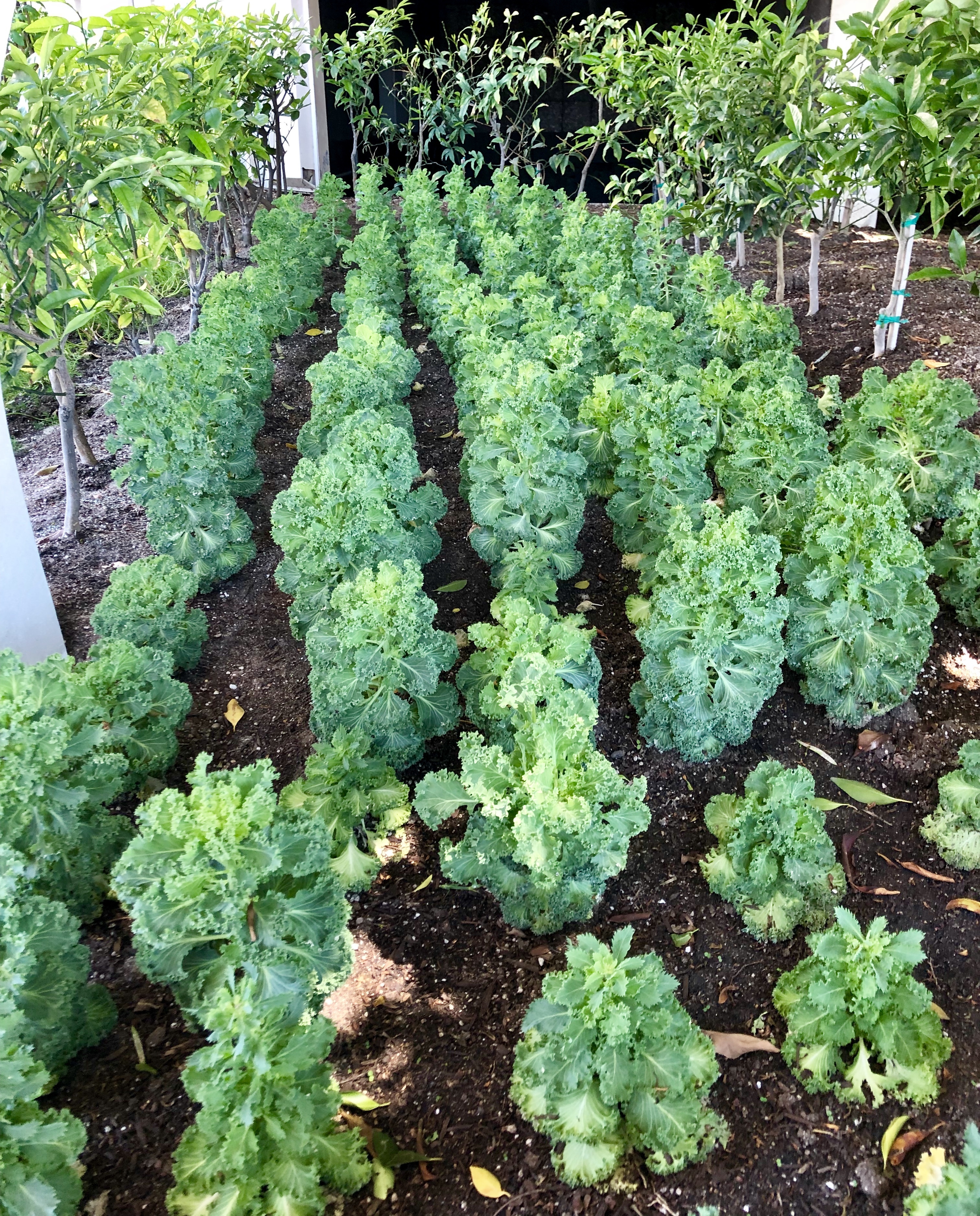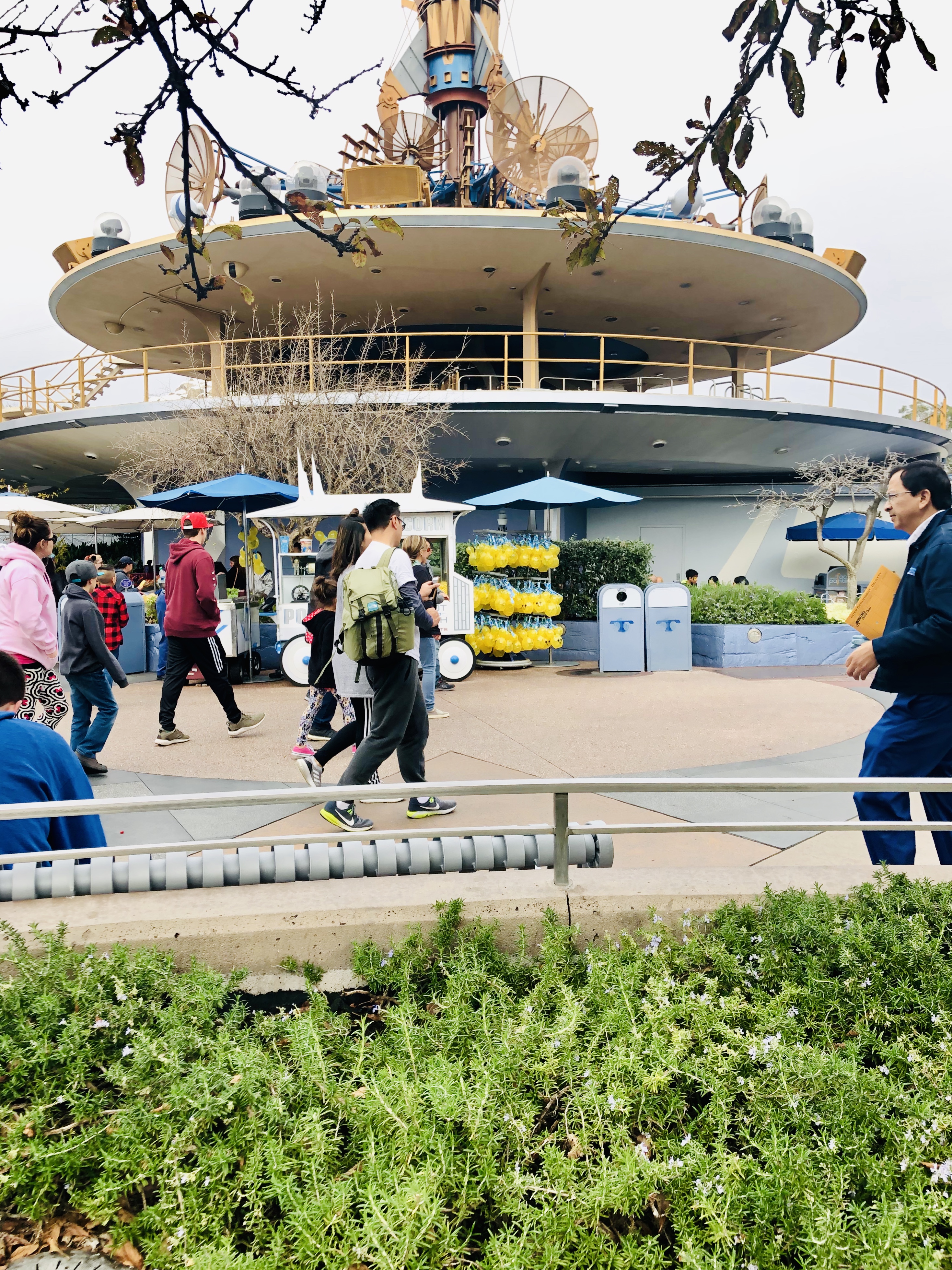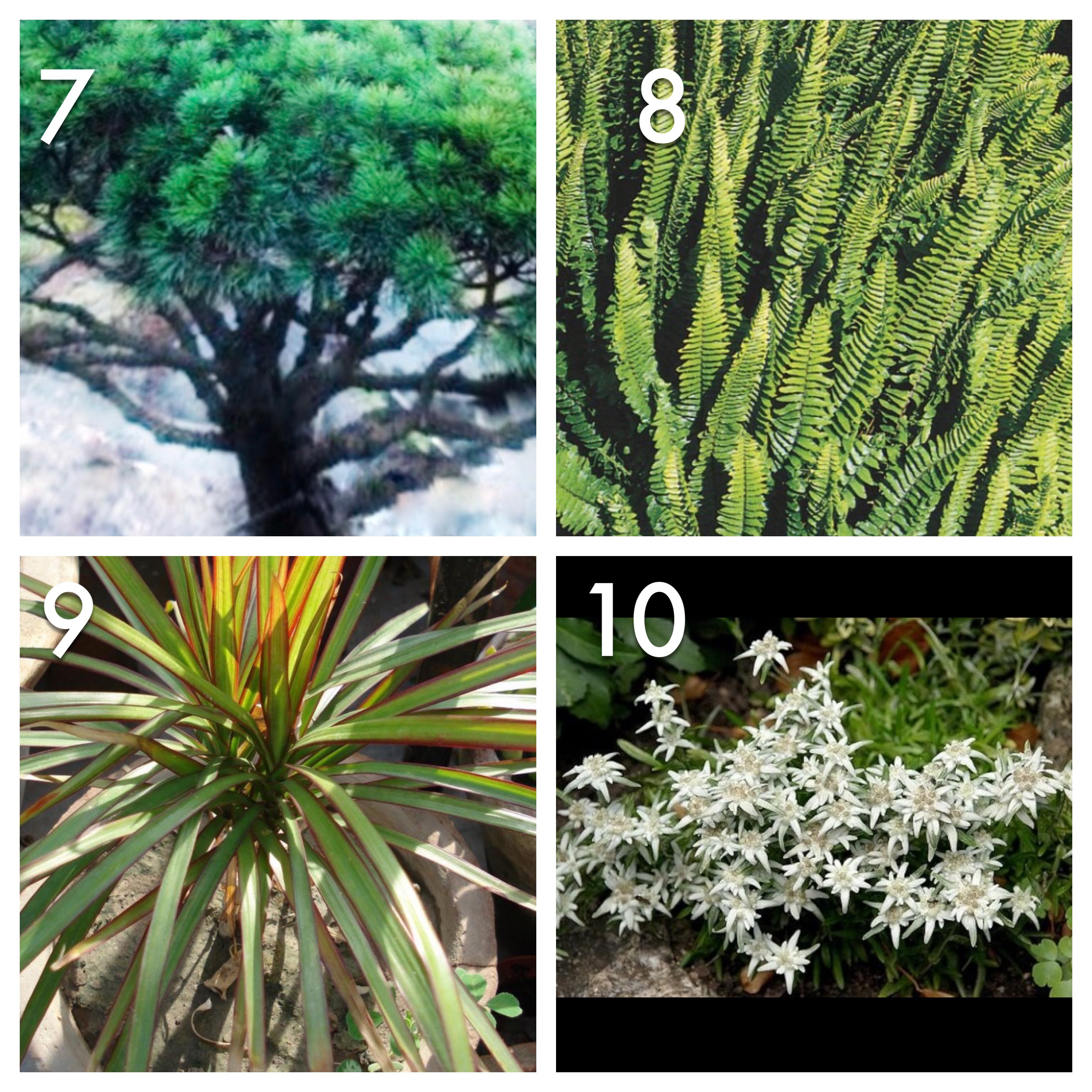
Disneyland took 160 acres of rural orange groves and transformed it into a theme park with enchanting landscaping where the flowers, trees, and other plants tell a story in each land. You guys know we are not your average Disneyland-goer; we LOVE everything about Disneyland! We were surprised to find there were quite a few things about Disneyland and it’s history we DIDN’T know! So we’re here to fill you in on 7 things you (probably) didn’t know about Disneyland!
1) Tomorrowland's landscaping was designed with "Agrifuture" in mind--a sustainable eco friendly future.

The theme for Tomorrowland in 1998 was “Agrifuture.” The Disneyland “Imagineers” wanted to present a sustainable and eco-friendly future. As a result, Disneyland worked to make, “the visionary landscaping double as a potential farm, where humanity makes the most of its resources.”
Where can you find the "Agrifuture" billboard?
You can still see this “Agrifuture” billboard along the Disneyland Railroad right before the Tomorrowland stop near Autopia. However, you have to ride the train to see it!

Growing food for a large population
Imagineers believed that all free space in the future would be needed to grow food for the world’s large population. So as a part of their “agrifuture” design all ornamental landscaping was replaced with beautifully manicured, yet edible, gardens! Look around next time you’re in Tomorrowland you won’t see any flowers there, instead you’ll see the landscaped areas filled with fruits, vegetables, herbs, and seasonings!
2) 80% of Tomorrowland plants are edible!

Where can you find these edible plants?
Look closely the next time you’re wandering through Tomorrowland -- you might be surprised to see kale, artichokes, and lemons! In fact, vegetables, herbs and fruit trees grow all over Tomorrowland. At one point, all the plants in Tomorrowland were edible and were an example of a food source for the future. Now, Disneyland guides say about 80% of plants in Tomorrowland are edible and harvestable.

When we were at the park in January, the garden between the Astro Orbiter & Central Plaza was filled with cabbage and different lettuces, in addition to fruit on the orange and grapefruit trees.
Don't eat the plants!
While all those beautifully manicured fruits and vegetables might be tempting to eat, the cast members warned us they are sprayed heavily with pesticides! So stick to getting your fruit from the fruit stands in the park! The cast members at Disneyland did tell us that the plants at Disney World's Tomorrowland are actually harvested and eaten!
 More edible and harvestable plants
More edible and harvestable plants
Lavender, a wonderful seasoning used in herbs de Provence, as well as perfumes, sachets and décor, grows near the Tomorrowland Terrace stage.

3) Disneyland has "the best darn jungle this side of Costa Rica"!

Walt Disney wanted to create life-like settings to enhance storylines of rides and features at the park. He wanted a finished look for opening day, but he only had a year. According the the Disney Parks Blog, Walt Disney asked Bill Evans and his brother, Jack, “How about you fellows landscape Disneyland for me?”
From orange grove to theme park
“Within a year, Bill helped transform acres of Anaheim orange groves into lush theme park attractions. He wanted some alien looking plants for Tomorrowland. In addition, he planted a small group of orange trees at the entrance to Tomorrowland. Finally, for the Jungle Cruise, he created a canopy of bamboo, ficus, and palms, which tower 70 feet overhead, the two-acre man-made jungle was described by Bill as “the best darn jungle this side of Costa Rica.”
4) There are upside down orange trees planted in Disneyland!
Landscape architect Bill Evans was known for using unusual plants and using plants in unusual ways. As Disney Imagineer Terry Palmer explained: “In the Jungle Cruise, there’s a group of orange trees that most people would never recognize because Bill planted them upside down. He decided the gnarled roots of the orange trees looked like suitably exotic jungle branches.”
Side Note: I was just in El Salvador and saw tons of mangrove trees and the orange tree roots really do look just like the mangroves!

Bill’s name is now on a shop window on Main Street. The tour guides explained that each window on Main Street has a name of a fictional vendor who “owns” the business. Disneyland used the shop windows to give credit to important creators at the park. Furthermore, the guides said it's like credits at the end of a movie. Take a close look at the Opera House and you’ll see a top left window reads: Evans Gardens - Exotic & Rare Species - Freeway Collections - Est. 1910 - Morgan (Bill) Evans - Senior Partner.
5) The flora and fauna are designed to tell stories all over Disneyland!

Walt's vision
Part of Walt Disney’s vision was to tell the stories of each land using landscaping and horticulture. Like we mentioned earlier, in Tomorrowland, plants tell the story of the space age, of sustainability, edible gardens of the future, and eco friendliness.
According to the Southern California Water Authority: “You’ll find many amazing things at Disneyland: Mickey Mouse, dragons, princesses, and awesome thrill rides. One thing you won’t find a lot of is grass.”
"Plants support the environment"
Instead, you'll find "Plants support the environment, from jungle, to the Old West, to the edible gardens of the future. Among those plants are quite a few water smart varieties." Disneyland recently transitioned Autopia to tell the story of a freewheeling road trip while using more “water savvy” plants.
6) The landscaping at Disneyland is changed out 8-10 times per year.
The tour guides told us, to keep the landscape looking perfect, the plants are changed out 8-10 times per year all around Disneyland. The park is known around the world for one of the finest examples of beautiful gardens. You'll notice our intro photo of Tomorrowland (taken in January 2019) has different plants than the photo of Tomorrowland above (taken in May 2019).
7) CHALLENGE: Can you find these 11 plants in Disneyland?
Finally, we thought we’d take you on a little treasure hunt to see if you can find some special plants the next time you're at Disneyland. Save this search for your next Disneyland visit, and have even more fun!

- Kale
- Artichoke
- Tomato
- Parsley

5) Floral Mickey Landscape –
Did you notice the Mickey landscape at the park entrance? You probably took a picture here on your way in! This backdrop of 7,000 + plants has been at Disneyland since the beginning. The gardeners change it often so it looks fresh and colorful all year.
(Picture above featuring my cute sisters and nieces!)

After that, how many animal topiaries can you find? Topiaries grow near Small World and around Fantasyland. Look for animals, fish and Disney characters. It takes over five years to grow just one of these living sculptures.

Next, these plants are different places around Disneyland. Can you find them?
7) Mugo Pine -- the oldest tree in Disneyland is 150 years old but only 2 feet tall (grows in the land of the Storybook Canal Boats to right of Gepetto’s workshop).
8) Sword Fern--You can spot these ferns all over Fantasyland.
9) Dragon Tree--Look for these trees by the Haunted Mansion in New Orlean's Square.
10) Edelweiss -- a wildflower of the Swiss Alps blooms in summer near the Matterhorn.

11) The Tiny Home of Patrick Begorra
We know this picture almost looks like an elephant! Actually, it's the bottom of a tree trunk! Can you find the tiny house built into a tree trunk in Adventureland? It’s the home of Patrick Begorra! A Little Golden Book, published first in 1955, tells the story of creating Disneyland and the little man who lived there. You can order it on Amazon -- try reading the book before you go to Disneyland, then let your kids hunt for the little house of this Leprechaun! (The house lies at the base of a tree near the Indiana Jones ride.)
Happy Hunting! Above all, we hope you had fun reading our Disneyland facts and searching for some special things! How did you do on the "7 Things You Didn't Know About Disneyland?" We love a trip to Disneyland anytime we can swing it, and having something to search for adds to the adventure.
 More edible and harvestable plants
More edible and harvestable plants







Heather C.
What a fascinating article!! Thank you for sharing what you learned!
I am curious about something though...
with Tomorrowland's crops rotating so often, what do they do with all the plants they harvest?
In Fine Taste
Hi Heather! So I know the plants at Disneyland are not consumed because of the large quantities of pesticides they use. We were told that the plants at Disney World were at one point (not sure if they still are!) harvested and eaten. I'd like to think they use them within the park restaurants, but I actually have no idea! I'll have to investigate the next time I am in Florida!
- Alyssa